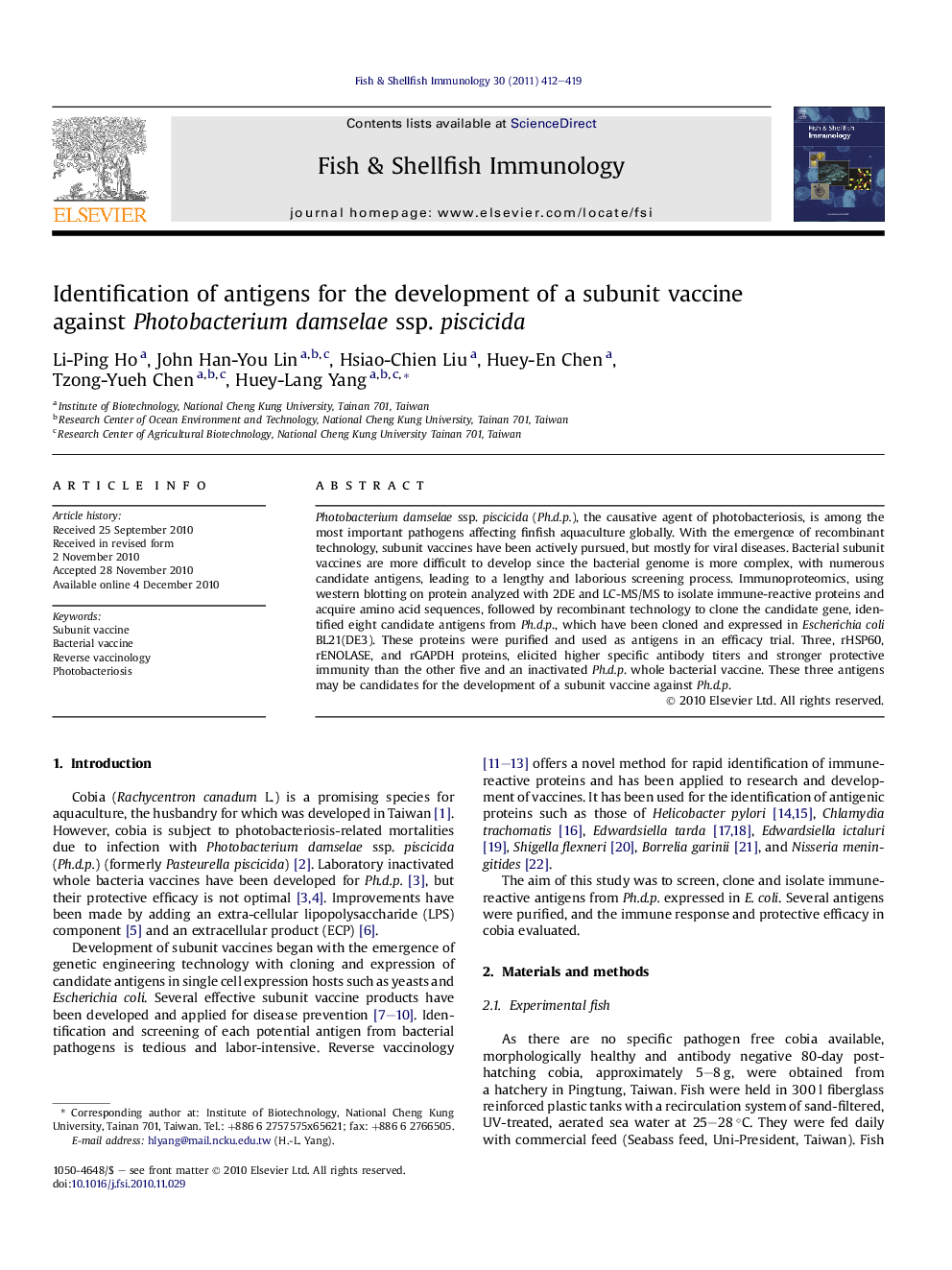| Article ID | Journal | Published Year | Pages | File Type |
|---|---|---|---|---|
| 2432749 | Fish & Shellfish Immunology | 2011 | 8 Pages |
Photobacterium damselae ssp. piscicida (Ph.d.p.), the causative agent of photobacteriosis, is among the most important pathogens affecting finfish aquaculture globally. With the emergence of recombinant technology, subunit vaccines have been actively pursued, but mostly for viral diseases. Bacterial subunit vaccines are more difficult to develop since the bacterial genome is more complex, with numerous candidate antigens, leading to a lengthy and laborious screening process. Immunoproteomics, using western blotting on protein analyzed with 2DE and LC-MS/MS to isolate immune-reactive proteins and acquire amino acid sequences, followed by recombinant technology to clone the candidate gene, identified eight candidate antigens from Ph.d.p., which have been cloned and expressed in Escherichia coli BL21(DE3). These proteins were purified and used as antigens in an efficacy trial. Three, rHSP60, rENOLASE, and rGAPDH proteins, elicited higher specific antibody titers and stronger protective immunity than the other five and an inactivated Ph.d.p. whole bacterial vaccine. These three antigens may be candidates for the development of a subunit vaccine against Ph.d.p.
Research highlights► A rapid screening method of potential antigen for fish vaccine development. ► Subunit vaccine might provide better protection than conventional inactivated whole bacterial vaccine. ► Subunit vaccine using recombinant antigen can induce antibody response as inactivated whole bacteria vaccine in trail using farmed cobia. ► Booster immunization of subunit vaccine is not required to reach maximal protective efficacy as a previous observation of a multiple-valent inactivated whole bacteria vaccine in trail using farmed cobia.
